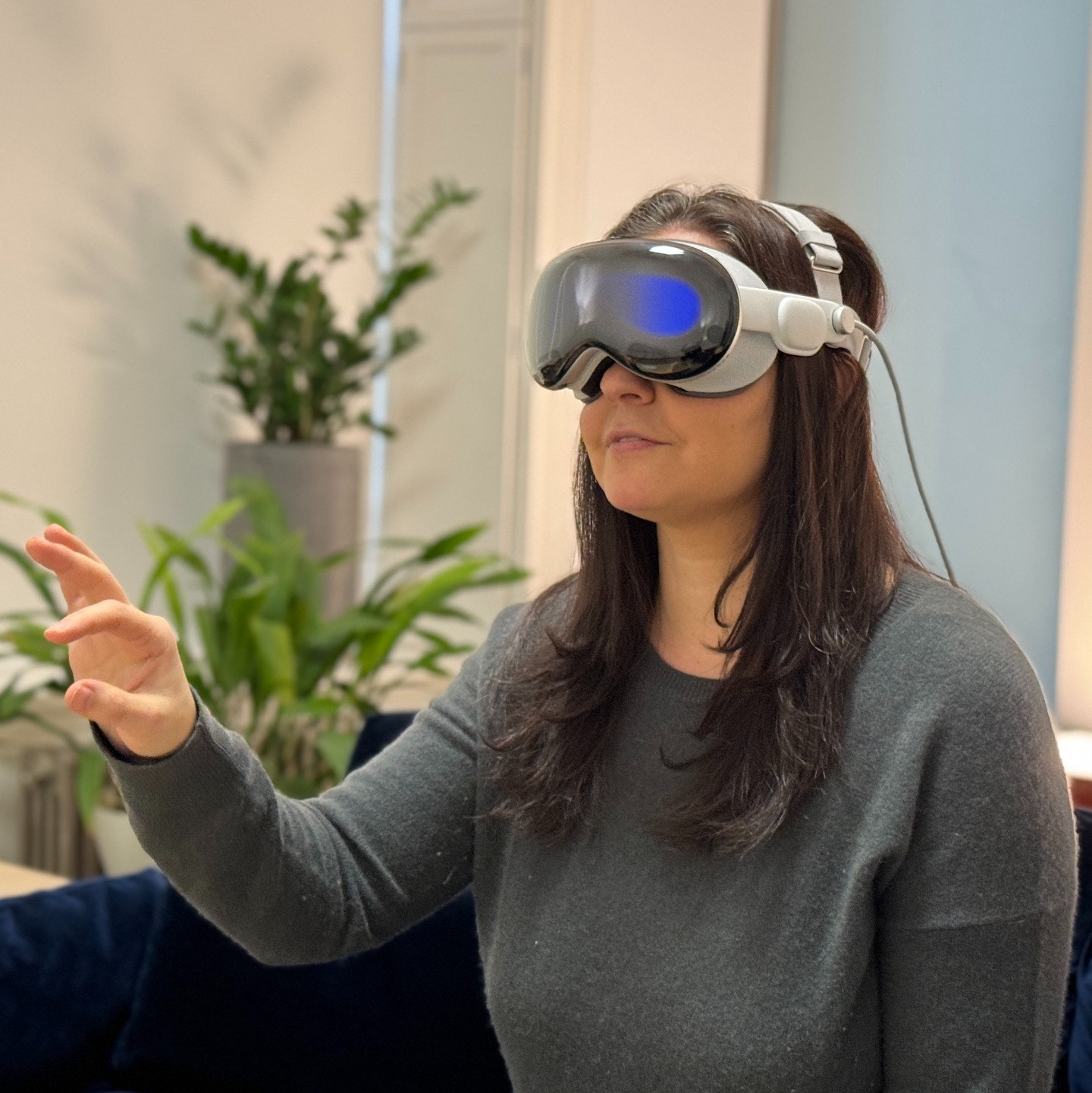Apple seems to not want you to notice the battery. The external battery pack barely appears on the product page on Apple’s website, showing up only at the end of a photo gallery at the bottom of the page. And in demo sessions this week, Apple told journalists they were not allowed to snap photos or capture any video of the hardware, an unusual rule for a press briefing. Instead, the company had its own photographer take photos during the Vision Pro demos. Every photo you’ve seen this week of reporters sitting on a couch while wearing the headset were shot by Apple.
Notably, the battery pack doesn’t appear in any of them. One attendee chose to run the attached cable down the back of his sweatshirt. In another shared image, of The Verge’s Nilay Patel, the cable is clearly visible, but the photo is cropped to avoid showing the battery pack. Chokkattu experienced this too; he set the Vision Pro’s battery pack on the couch cushion next to him during his demo, but in the photo Apple shared with us, the offending pack is cropped out of the frame.
It doesn’t take a serious sleuth to spot the pattern in the photos. The battery pack is probably the most inelegant element of what is an otherwise unblemished product. It’s an explicit design decision: Pack the battery into the headset itself and risk adding an untenable amount of weight, or attach an external battery to offload that weight and make room for advanced sensors. It’s representative of the technical trade-offs that exist in virtual reality that even Apple can’t engineer its way out of.
“Everyone wants light fluffy headsets without battery sets,” says Jeremy Bailenson, a longtime VR researcher and founding director of Stanford University’s Virtual Human Interaction Lab. “But you can’t have everything. You can’t have incredible eye and finger tracking without those sensors. VR is always about trade-offs.”
Power Play
The obfuscation of the Vision Pro battery pack only makes its existence that much more notable, raising two questions in particular: How does Apple envision people using this thing? And is having an external battery pack a serious hindrance to that usability?
All signs indicate that Apple believes that this version of the Vision Pro is for sitting—for working and watching movies and browsing old photos (now in 3D!) and even FaceTiming. Apple has called it “the ultimate workspace” and “an infinite canvas for multitasking and collaborating.” Most Vision Pro demos, including my own last June, were seated demos aside from one interaction with a Jon Favreau–created dinosaur video.
The Vision Pro headset includes gesture control technology that frees the wearer’s hands from controllers, another distinction from the Meta Quest Pro and Meta Quest 3, which do include controllers. Nearly every Meta Quest experience I’ve had involves standing: multiplayer gaming, punching the air in a fitness app, or peering down at a virtual world map and then zooming in on a vacation location.
If Vision Pro is mostly meant to be used from a couch cushion or desk chair, the external battery pack may not factor in as much. As I pointed out last spring, it’s an unusual choice for a consumer tech company that has, over the past two decades, created products that we transport with us, literally everywhere we go.
Some industry experts are split on the external battery design. Bailenson, for one, believes that headset computing should be optimized for shorter durations. “After 30 minutes, it’s probably time to take off the headset and go about your day and touch some walls and drink some water,” he says. “So in this instance there really shouldn’t be a need for an external battery pack, in my opinion, because most experiences are short.”
Lire l’article complet sur : www.wired.com



Leave A Comment